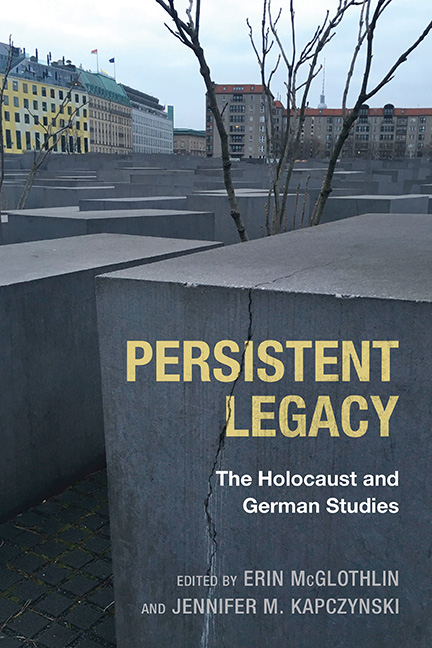Book contents
- Frontmatter
- Contents
- Acknowledgments
- Introduction
- Part I Abiding Challenges
- Part II The Holocaust in German Studies in the North American and the German Contexts
- Part III Disentangling “German,” “Jewish,” and “Holocaust” Memory
- Part IV Descendant Narratives of Survival and Perpetration
- Part V Remediated Icons of Memory
- Part VI Holocaust Memory in Post-Holocaust Traumas
- Notes on the Contributors
- Index
13 - Hitler in the Age of Irony: Timur Vermes’s Er ist wieder da
Published online by Cambridge University Press: 17 June 2021
- Frontmatter
- Contents
- Acknowledgments
- Introduction
- Part I Abiding Challenges
- Part II The Holocaust in German Studies in the North American and the German Contexts
- Part III Disentangling “German,” “Jewish,” and “Holocaust” Memory
- Part IV Descendant Narratives of Survival and Perpetration
- Part V Remediated Icons of Memory
- Part VI Holocaust Memory in Post-Holocaust Traumas
- Notes on the Contributors
- Index
Summary
THE TENDENCY TO see Hitler everywhere lies at the heart of Erik Eger's and Magnus Oliv's 2010 mockumentary, One Hundred Years of Evil. Presenting itself as the efforts of a Swedish professor to uncover the truth about Hitler, the film imagines a world in which Hitler not only survived the end of the Second World War but also was secretly brought to the United States, where he lived—and thrived—for decades. A mixture of one-on-one interviews and photographs and movies doctored and aged to look archival, the film depicts Hitler, Zelig-like, moving through history and shaping modern American politics and culture, responsible for everything from fast food and soap operas to the McCarthy Red Scare and the Cuban missile crisis. Hitler, under the assumed name of Adolf Munchenhauser, is an invisible presence, a secret mastermind whose continued survival was enabled by a conspiracy of political and governmental figures. Initially thwarted in their attempts to uncover the truth, the filmmakers eventually find their way to a cryonics facility (fittingly called Cryoputsch), where they destroy Munchenhauser's life support system before being arrested and imprisoned.
While the film itself is long on concept and short on execution, it embodies two persistent tendencies in aesthetic and cultural conceptualizations of Hitler since the end of the Second World War, tendencies that reflect the central role that Hitler has played in shaping historical consciousness. First, it is yet another example of allohistorical representations that imagine a world in which Hitler has survived and even prospered. Alternate history fiction is dominated by works that imagine how the trajectory of world history would have been affected by Hitler's death (would there have been a Holocaust without Hitler?) or by a Nazi military victory (if Hitler had won, could the rest of the world have survived?).
More to the point, its central conceit—that Hitler is responsible for everything that has gone wrong since the end of the war—underscores the ways in which Hitler—the abstract figure, rather than the historical one—is deployed as both explanation and justification for contemporary political actions.
- Type
- Chapter
- Information
- Persistent LegacyThe Holocaust and German Studies, pp. 249 - 268Publisher: Boydell & BrewerPrint publication year: 2016
- 2
- Cited by

